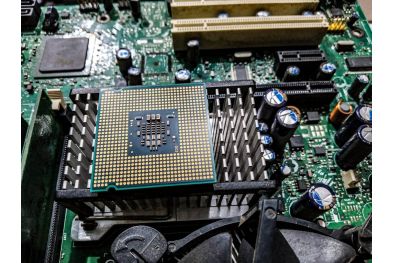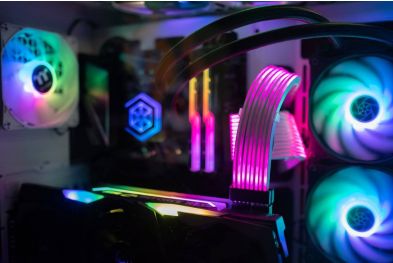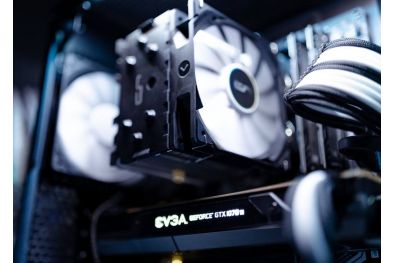How to Choose Monitors and Peripherals for Your New PC
When building a new PC, most people focus heavily on internal components like the CPU, GPU, and RAM. However, choosing the right monitor and peripherals is equally important. These external devices directly affect your comfort, productivity, and overall experience. In this guide, we’ll help you select the best peripherals to match your needs — whether you’re building a gaming rig, a home office workstation, or a content creation machine.
Choosing the Right Monitor
Consider Your Primary Use
The type of monitor you need depends heavily on how you’ll use your PC:
- Gaming: Focus on refresh rate, response time, and adaptive sync (G-Sync or FreeSync).
- Content Creation: Prioritize color accuracy, resolution, and screen size.
- Office Work: Comfort features like anti-glare, blue light filters, and ergonomic stands matter more.
Screen Size and Resolution
- For gaming: 24 to 27 inches is the sweet spot, with 1080p (for budget builds) or 1440p (for higher-end builds).
- For productivity: Larger screens (27 inches or more) with higher resolutions (1440p or 4K) allow better multitasking.
- For content creation: A 4K monitor with excellent color calibration is ideal.
Refresh Rate and Response Time
- 60 Hz: Fine for office use.
- 120 Hz to 240 Hz: Ideal for competitive gaming, providing smoother visuals.
- 1 ms to 5 ms response time: Reduces motion blur in fast-paced games.
Panel Type
- IPS: Best for color accuracy and wide viewing angles (great for editing and creative work).
- TN: Faster response times, often cheaper — good for competitive gaming.
- VA: Better contrast, decent all-around choice, but slower than TN.
Essential Peripherals: What to Look For
Keyboard
The keyboard is your direct connection to your PC, so choose one based on your needs.
Types of Keyboards
- Membrane Keyboards: Affordable, quieter, but less responsive.
- Mechanical Keyboards: More expensive but highly durable and preferred by gamers and typists due to tactile feedback.
- Ergonomic Keyboards: Shaped for better wrist positioning, ideal for long typing sessions.
Key Features to Consider
- RGB Lighting (for aesthetics)
- Programmable Keys (for productivity or gaming macros)
- Wrist Rest (for comfort)
Mouse
Just like the keyboard, the right mouse depends on your usage.
For Gaming
- High DPI sensors (adjustable up to 16,000+ DPI)
- Extra programmable buttons for quick in-game actions
- Lightweight design for fast movement
For Work
- Ergonomic design to reduce hand strain
- Wireless for a cleaner desk setup
- Precision tracking for detailed work (design, editing)
Headset or Speakers
For Gaming
- Surround sound or virtual surround for positional audio.
- Noise-canceling microphone for clear voice chat.
For Work
- Comfortable for long calls (important for remote workers).
- Good microphone quality if you attend a lot of meetings.
For Entertainment
- High-fidelity audio for music and movies.
- Wireless connectivity for convenience.
Webcam
If you work remotely or stream content, a good webcam is essential. Features to consider:
- 1080p resolution (minimum for professional use)
- Autofocus for clear images
- Low-light performance
External Storage
Even with internal drives, external storage is useful for backups and transferring files.
- SSD External Drives: Faster and more durable, ideal for large file transfers.
- Traditional HDDs: Cheaper per GB, better for long-term backups.
Other Helpful Peripherals
- USB Hubs: Especially if your case has limited front ports.
- Game Controllers: If you plan to play console-style games.
- Microphone: If you stream, podcast, or record content.
Compatibility and Aesthetics
While performance and functionality are the priorities, don’t forget to match the style of your peripherals to your build. RGB lighting, matching color schemes, and branded ecosystems (like Logitech’s G-series or Razer’s Chroma) can create a visually cohesive setup.
Budget Considerations
You don’t have to buy the most expensive peripherals right away. Prioritize what you’ll use most, and look for deals and sales. You can always upgrade peripherals later when your budget allows.
Final Checklist for Peripherals
| Peripheral | Key Considerations |
|---|---|
| Monitor | Size, resolution, refresh rate, panel type |
| Keyboard | Type (mechanical/membrane), ergonomic design |
| Mouse | DPI, programmable buttons, ergonomics |
| Audio | Headset vs speakers, mic quality |
| Webcam | Resolution, autofocus, low-light performance |
| Storage | External SSD vs HDD |
| Extras | USB hubs, controllers, microphone |
Your Perfect Setup Awaits
Choosing the right monitor and peripherals for your new PC is just as important as selecting the internal components. With the right combination, you can enhance your gaming performance, work productivity, and creative output. Take your time, prioritize your needs, and you’ll end up with a setup that’s both functional and enjoyable to use.







